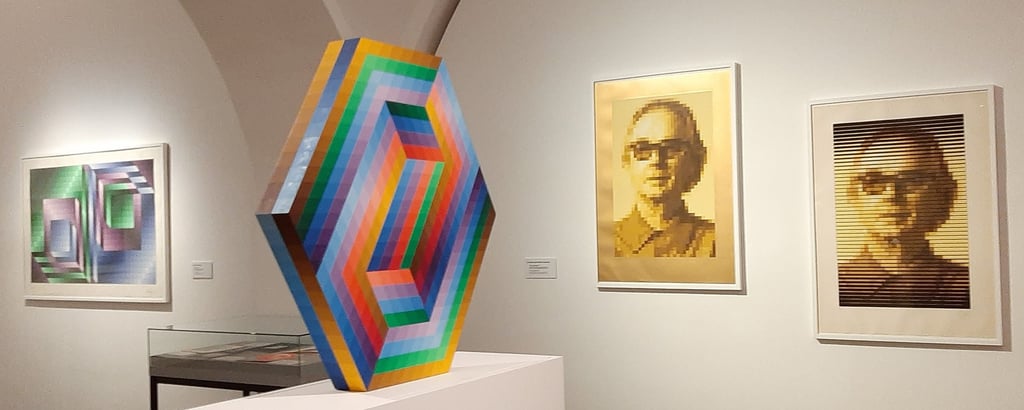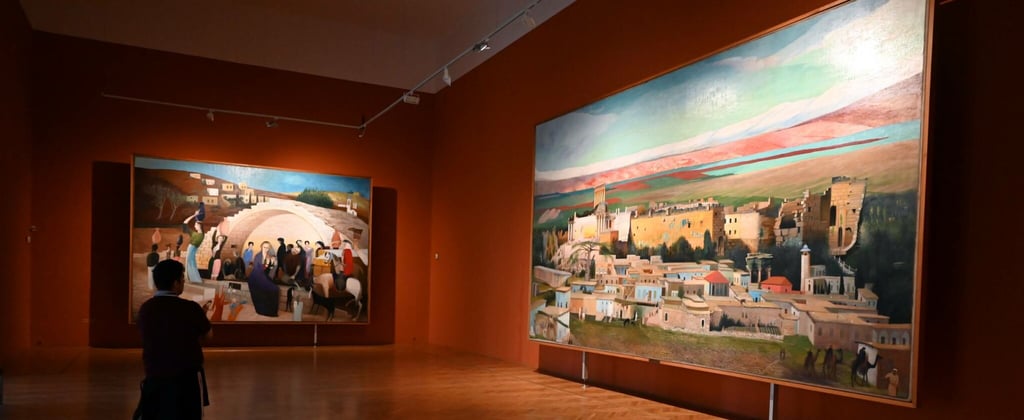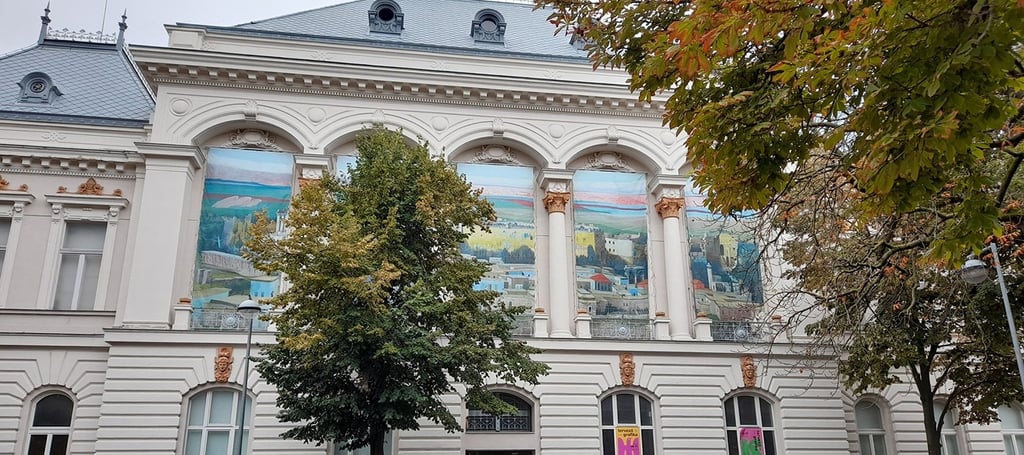Csontváry Museum – Pécs’ Temple of the Solitary Visionary
Step into the universe of a mad genius, where colors blaze and silence shout


The Pilgrimage Begins
In the warm heart of southern Hungary, where the hills of Baranya cradle the ancient city of Pécs, there exists a place unlike any other. The Csontváry Museum is not a museum in the conventional sense. It is a sanctuary, a shrine, a whispering chapel dedicated to one of the most enigmatic, unrepeatable figures in Hungarian — and world — art history: Tivadar Csontváry Kosztka.
To cross its threshold is to step into a mind both tormented and transcendent. It is to witness a painter who believed he was chosen by divine forces. A pharmacist-turned-visionary whose brushwork poured forth not from the schools of art, but from the strange, sublime impulses of prophetic solitude.
This museum, nestled within a modest structure on Janus Pannonius Street, is not vast. But it does not need to be. Like the man it honors, it contains multitudes.
Who Was Csontváry?
Tivadar Kosztka — who later signed his paintings as "Csontváry" (meaning “bone castle,” a nod to ancestral legend) — was born in 1853 in Sabinov, then part of the Austro-Hungarian Empire. For most of his life, he was a practicing pharmacist. Yet in 1880, at the age of 27, he heard a voice.
"You shall be the greatest painter of the world, greater than Raphael," it told him.
Rather than dismiss this divine message, Csontváry obeyed. He did not pick up a brush until his 40s. He traveled across the Mediterranean, North Africa, and the Middle East, seeking mystical light and landscapes that spoke of timelessness. His canvases are vast — not just in scale, but in spiritual scope. They shimmer with an internal energy, vibrating with a palette that seems borrowed from some celestial realm.
Yet during his lifetime, Csontváry was dismissed. Critics mocked him. He exhibited rarely. He died in poverty in 1919, his works gathering dust in a workshop no one visited. It was only decades later that Hungary — and then the world — began to understand that a genius had walked among them.
A Museum Carved from Devotion
The Csontváry Museum opened its doors in 1973 as a culmination of passionate advocacy by Hungarian art historians who saw in Csontváry not eccentricity, but ecstasy. The building itself, once a school, was chosen for its neoclassical serenity — a perfect foil to the wildness that unfolds within its walls.
This museum does not overwhelm with multimedia or modern distractions. It is quiet. It is bare. It lets the paintings breathe. It lets the visitor surrender.
The collection is small but mighty. Just around a dozen major works are on display — enough to set the soul on fire.
The Masterpieces
The star among stars is The Lonely Cedar (1907), perhaps Csontváry’s most iconic painting. A single, gnarled tree stands against a twilight sky in the mountains of Lebanon. Its branches twist as if in pain and glory. This tree, Csontváry said, was a symbol of himself — chosen, isolated, misunderstood, and immortal. The colors are electric. The silence is thunderous.
Beside it hangs Pilgrimage to the Cedars in Lebanon (1907), a monumental canvas over 7 meters long. Here, mysticism and procession blend in a surreal celebration beneath sacred trees. Faces glow. Light pours not from the sky, but from within the figures. It is a vision, not a scene. A hymn in pigment.
Other highlights include:
The Ruins of the Greek Theatre at Taormina — where sunlight and shadow duel on ancient stone.
Maria’s Well in Nazareth — a moment of biblical tranquility given dreamlike intensity.
View of Selmecbánya — Csontváry’s hometown rendered with an eerie, hyper-realistic gaze.
These are not merely paintings. They are experiences. Stand before them long enough, and they begin to move.
A Vision Beyond Genre
Csontváry defies classification. He was not an Impressionist, though he painted light. Not a Symbolist, though he trafficked in archetypes. Not a Futurist, though his brushwork hurtles toward tomorrow.
His technique is instinctive. His skies — often layered with aquamarine and violet — feel like the emotions of planets. His figures float in a space where time is arrested. His use of scale, often exaggerated, evokes the sense of myth rather than reality. He was not painting places — he was painting metaphysical states.
He was a prophet with a palette.
Why Visit the Csontváry Museum?
Because here, in this humble building in a corner of Pécs, hangs a truth that transcends art history. Csontváry is not admired for his polish but for his purity. He speaks not to the intellect but to the intuition. The museum is a threshold: you walk in as a viewer, and you leave as a witness.
The silence inside is not emptiness — it is reverence.
And it is an experience that exists nowhere else in the world. You can see Rembrandt in many cities. You can encounter Monet in dozens of galleries. But Csontváry lives here, and only here.


The Museum’s Place in Pécs’ Cultural Landscape
The Csontváry Museum is more than a jewel — it is a keystone in the crown of Pécs, a city already rich with Roman ruins, Ottoman mosques, and early Christian chapels. But no site feels as raw, as human, as alchemical as this one. It does not merely preserve; it reverberates.
Just steps away from the museum lies the Janus Pannonius Museum, named after the 15th-century poet-bishop and showcasing the broader artistic heritage of the region. Yet while Janus speaks in elegant Latin verse, Csontváry howls in a tongue known only to seers and madmen.
The museum is situated close to Pécs' historic center, meaning visitors often drift from the cobbled Király Street, past wine bars and bookstores, into this gallery of wonders. They arrive unsuspecting. They leave haunted.
A Place of Solitude and Awakening
Many visitors speak of the silence in the gallery as something almost sacred. Unlike bustling modern art museums, here the low footfall and high ceilings conspire to offer an almost monastic ambiance. The hush amplifies the emotional pitch of the works. You are not looking at art — you are meditating before it.
People linger. Not for selfies or spectacle, but for absorption. In an age of instant images and attention deficits, the Csontváry Museum demands — and rewards — slowness.
Art students sit with sketchbooks. Old couples wander with teary eyes. Children are either bored or bewitched. And every once in a while, someone stands completely still before The Lonely Cedar, as if trying to understand not the painting, but themselves.
The Curators and Their Care
The custodians of the museum — the art historians, the archivists, the restorers — speak of their subject with a kind of hushed reverence. They are not merely caretakers; they are guardians of a spirit.
Much work goes on behind the scenes: preservation of the delicate pigments, research into Csontváry’s letters and diaries, and participation in international conferences that reframe his legacy not just as a Hungarian eccentric, but as a visionary of universal resonance.
Special exhibitions are rare, but when they do occur, they usually pair Csontváry with his spiritual siblings — Van Gogh, William Blake, Marc Chagall. Each time, the conclusion is the same: Csontváry stands apart.
The Echo in the Present
While Csontváry’s technique may be rooted in the past, his vision feels increasingly contemporary. In an age grappling with ecological crisis, Csontváry’s devotion to natural symbols — trees, skies, oceans, mountains — feels urgent. In a world fractured by politics and identities, his quest for universal spirituality feels necessary.
Contemporary Hungarian artists often cite him as a muse — not for style, but for soul. And beyond Hungary, he is slowly entering the larger conversation of visionary art: the lonely genius who painted as if decoding dreams.
The museum, then, is not just retrospective. It is prophetic.


Visiting Information
Practical Information
Location:
Csontváry Múzeum
Janus Pannonius utca 11,
7621 Pécs, Hungary
Opening Hours:
Tuesday – Sunday: 10:00 – 18:00
Closed on Mondays
(Last entry: 17:30)
Admission:
Adult: 1,500 HUF
Student/Senior: 800 HUF
Children under 6: Free
Combined ticket with other museums of the Janus Pannonius Museum network available
Guided tours available upon request in Hungarian and English
Accessibility:
The museum building is partially wheelchair accessible. Call in advance for accommodations.
Contact:
Phone: +36 72 514 045
Email: info@jpm.hu
How to Get There:
Pécs is easily reached by train from Budapest (approx. 3 hours), and the museum is a short walk from the main square, Széchenyi tér. Local buses and taxis are also available.
Official Website:
www.jpm.hu
Social Media:
Facebook – @JanusPannoniusMuseum
Instagram – @januspannoniusmuseum








